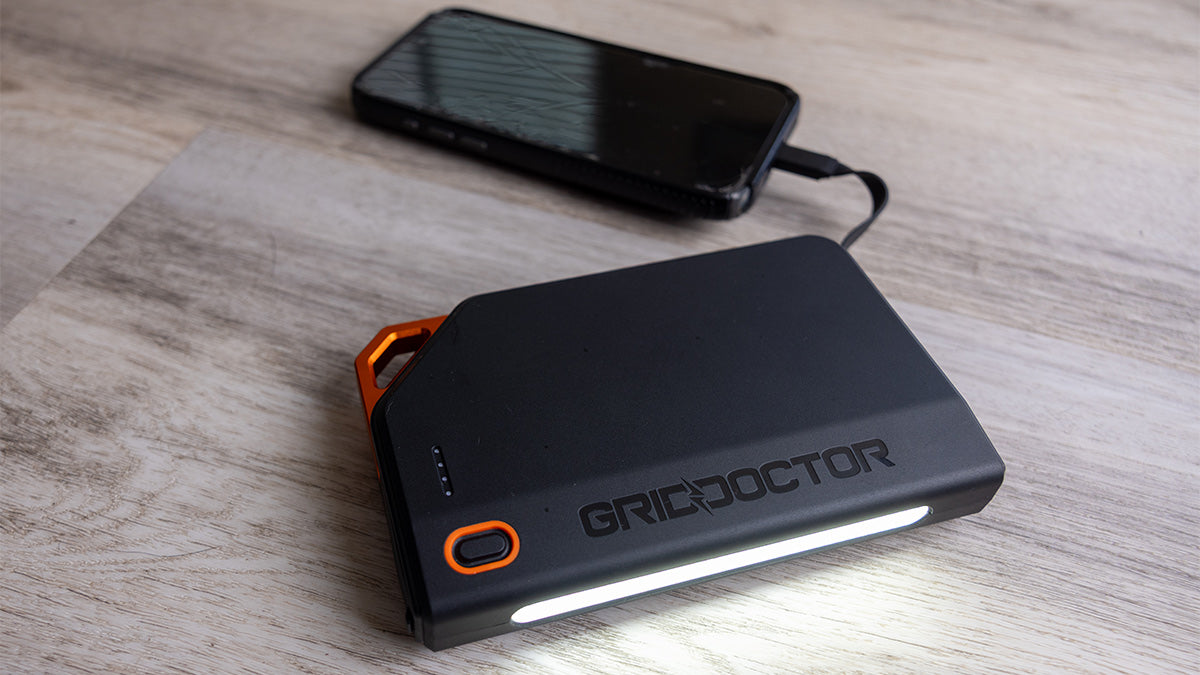What’s the first thing everyone does when temperatures climb into the 70’s, 80’s and 90’s? Turn up the AC.
As temperatures rise higher and higher these days, electrical grids strain under the pressure of millions of air conditioners running overtime.
Add in the summer storm season (hello, hurricanes and thunderstorms!), and you've got a perfect recipe for sitting in the dark.
In fact, from 2000 to 2023, power outages caused by weather increased by a whopping 80%. And they're lasting longer, too.
Some outages last eight hours or more!
So before you find yourself sweating in the dark, scrolling through a dying phone wondering when the lights will come back on, let's talk about building a power outage kit that makes sense for your family.
What Needs Power?
Before spending a dime, walk through your house and make a list. Be honest about needs versus wants.
The Essentials:
- Medical devices (CPAP machines, oxygen concentrators, refrigerated medications)
- Food preservation (refrigerator/freezer)
- Communication devices (cell phones, tablets, radio)
- Basic lighting for safety
The Comfort Items:
- Fans or portable AC units
- Stove and microwave
- Entertainment devices for kids
- Coffee maker (yes, we consider this important too!)
The "Nice to Haves":
- Game consoles
- Multiple TVs
- Work-from-home equipment
Understanding your priorities helps you build a kit that's neither overkill nor putting you at risk.

Power Solutions That Actually Work
Portable Power Banks
Let's start with the backbone of any power kit—keeping your phones charged. A dead phone during an emergency isn't just inconvenient, it's potentially dangerous.
Look for:
- At least 10,000 mAh capacity (charges most phones 2-3 times)
- Multiple USB ports for family charging
- Solar charging capability for extended outages
Check out this solar power bank that passes all these tests with flying colors!
Solar Generators
This is where things get interesting. A 300W solar generator won't run your whole house, but it will keep your essentials humming along nicely.
Perfect for:
- Running a CPAP all night
- Keeping phones, tablets, and laptops charged
- Powering LED lights throughout your home
- Running a small fan
- Keeping a radio going for emergency updates
The Grid Doctor 300 System is sized just right for these needs. It's quiet (goodbye, gas generator noise), safe for indoor use, and the 100W solar panel means you can recharge even during extended outages.
For Serious Peace of Mind: Whole-Home Backup Options
If you have critical medical equipment, work from home, or simply want near-normal life during outages, a larger system makes more sense.
Our Grid Doctor 3300 Solar Generator System can power:
- Your refrigerator (keeping food safe)
- Multiple fans or a portable AC unit
- All your communication devices
- Lights throughout your home
- Even a microwave or coffee maker
And it’s currently on sale - 50% OFF!

The Underrated Champions
Sometimes the simplest solutions are the best:
Hand-Crank Radio with Flashlight: No batteries needed, ever. When cell towers fail, a hand-crank radio becomes your lifeline to emergency information. The weather band feature is especially crucial during storm-related outages—it's how you'll know if conditions are worsening or improving.
Solar Garden Lights: Here's a hack many people overlook: those decorative solar lights in your yard are emergency lighting in disguise. Bring them inside at dusk for free, renewable light throughout your home.
Car Chargers: Your vehicle is a generator on wheels. A simple USB car charger turns your car into a charging station for phones and small devices. Just remember to run the engine periodically to avoid draining the battery.
What You Can Honestly Skip
Let's save you some money and storage space:
Skip: Gas Generators for Apartments. If you're in an apartment or have close neighbors, skip the gas generator. They're loud, produce dangerous fumes, and many apartment complexes ban them. Solar is your friend here.
Skip: Cheap Inverters. Those $20 inverters that plug into your car's cigarette lighter? They can fry your electronics with "dirty" power. If you're investing in backup power, do it right.
Skip: Single-Use Battery Packs. In 2025, there's no reason to stockpile single-use batteries like it's 1985. Rechargeable solutions have come so far that single-use batteries are just expensive landfill fodder.
Your Power Outage Action Plan
- Start with what you have. You probably already own several items that work for emergency power.
- Buy incrementally. You don’t have to buy everything at once - and you might not need to! Start with smaller items first and work your way to complete peace of mind.
- Test everything twice a year. Here’s a good idea so you don’t forget: When you change clocks for daylight saving, test your kit!
- Store smartly. Keep some supplies in your car, some at home. Distribute flashlights throughout the house.
- Have a family plan. Everyone should know where supplies are and how to use them.

The Bottom Line
A power outage doesn't have to be a crisis. With some basic preparation—much of which is very budget friendly—you can keep your family safe and relatively comfortable.
Whether you DIY your entire kit from hardware store finds or prefer ready-made solutions, the important thing is to prepare before you need it.
If you're looking for quality emergency power options—from basic power banks to complete solar generator systems—check out our Beat The Heat Collection. It has everything you need to stay powered, comfortable, and fed throughout the whole summer.
Stay cool, stay smart, and rest easy this summer.

